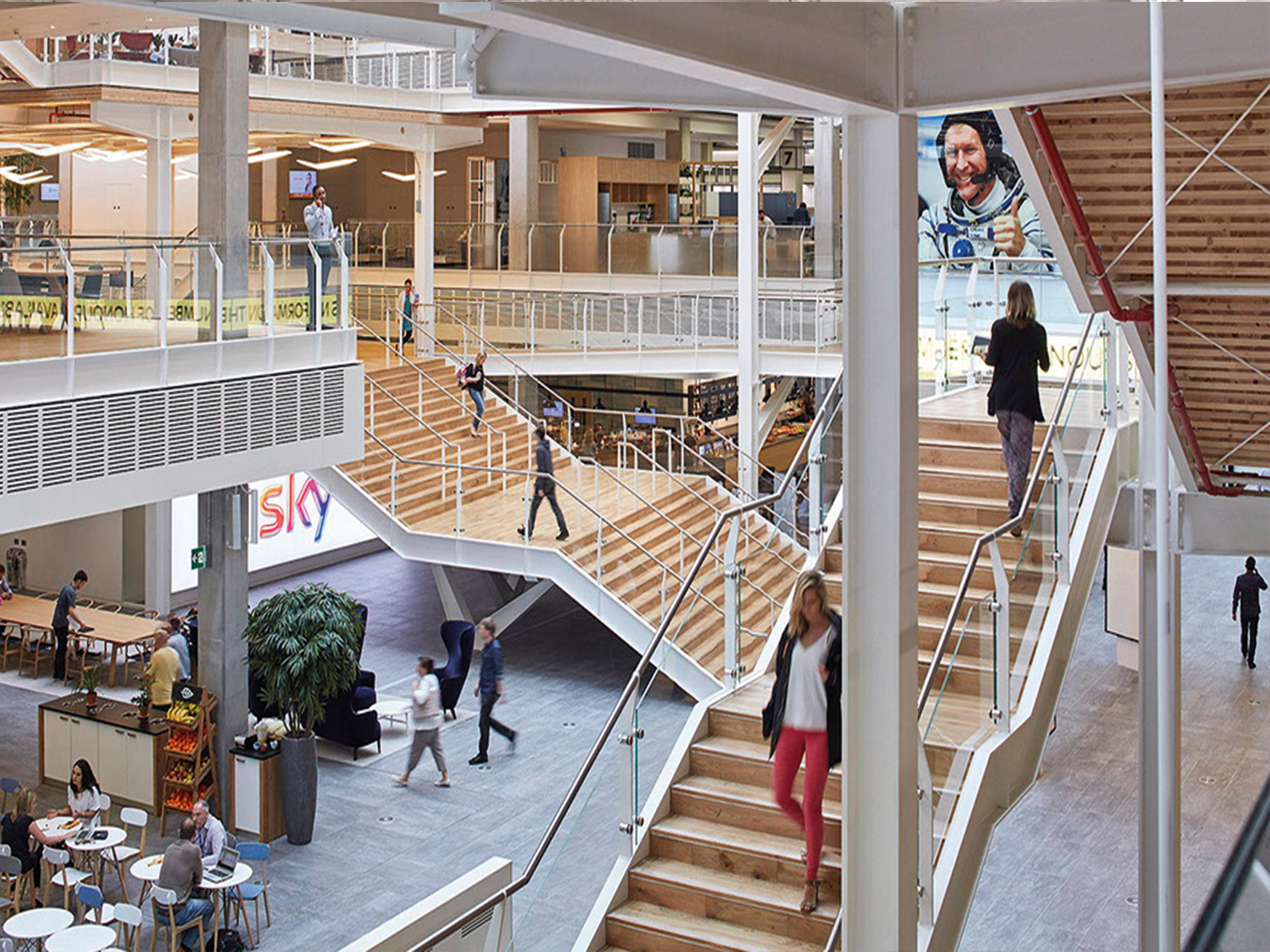Sunita Pachova, retail enthusiast and workplace industry expert, discusses the strategy and design components of retail layouts, explaining how they can be successfully applied to the workplace.
The perfect workplace has much in common with the average retail store layout: using human behaviour to create pathways and a flow between different zones, engaging front of house areas and entrances, and a psychological use of colour and products to entice footfall (or productivity). What lessons can the workspace take from modern retail design principles?
{{cta(‘9eb25105-d4f7-49da-9954-39334232ba2d’)}}
The Threshold or Decompression Zone
This is the first space in which your customers make contact with your brand. In retail, this space generally consists of 5 to 15 feet worth of space, which will give your visitors first impressions of your business.
The typical office can glean a lot of guidance from the retail front of house experience. In a store, you will always find the latest products or current trends presented in a prominent location. Employee engagement plays a huge part, too – the most successful retail layouts focus on staff being available at entrance points, creating an environment which makes customers feel welcomed and important.
The top reason consumers visit a store is to see, feel and experience the product in person. – KPMG: The path to purchase journey
Your front of house should provide a seamless experience, and as with a successful retail layout, it shouldn’t be an effort for your customers to move from one part of the workspace to another. Welcoming visitors into your space, and creating a social experience that also boasts your industry expertise, is key to ensuring a positive outcome.

Sunita Pachova, Business Development Manager, Condeco
To the Right, Please!
According to research, 90% of consumers will unconsciously turn right after entering a store, then continue to move around the store in a counter-clockwise direction. This phenomenon is known in the retail industry, but could it be beneficial in the workplace?
In retail, being able to see the product is vital – generally, top-selling merchandise will be placed on walls, whereas staple products will be closer to the middle of the room. This is because customers usually keep to the sides of the store, walking in a counter-clockwise direction. In the workplace, and particularly the reception area, this can be resolved by using a roaming or mobile receptionist. Salesforce Tower in London uses strategically placed receptionists, armed with mobile devices to reach out to guests and help check them in and out of the building. The overall effect is a more interactive customer experience, along with a better utilisation of real estate space, taking advantage of the ‘turn right’ effect.
The ‘Butt-Brush’ Effect
Behaviour expert Paco Underhill coined the phrase ‘The Butt-Brush Effect’ after observing typical customers avoiding looking at products if it brings them into close proximity with another shopper’s rear end! How can space on the retail shop floor compare to space in the workplace?
Most avid shoppers will name the general experience as their main motivation for hitting the high street. Being able to create a satisfying experience is the ultimate goal for a successful retail store, so catering for an individuals’ personal space, while taking them on a unique customer journey, is important.
Getting your space utilisation right is vital – enhancing meeting room usability, creating spaces which cater for all different types of activity, and promoting personal space for flexibility, will all boost productivity with your workforce. Using technology to manage space can also be effective: from meeting areas with touch screens, to video conferencing and desk booking. Technology gives employees the confidence to ensure there is a desk or a meeting room available, with ample resources or necessary levels of privacy.
{{cta(‘8d0f819d-817b-41f3-ae7b-e15d9c7ca8f3’)}}
Theatrical Spaces
Some retail stores are innovative, incorporating space for shoppers to see the product being designed or manufactured. To build a strong relationship with your product, services and employees, it’s crucial to give customers a peak behind the curtain.
Technology can spark a theatrical experience in the average office – take video conferencing, interactive whiteboards, voice integration or even facial recognition as examples. This kind of tech creates visually impressive scenes, while also generating a seamless experience for employees themselves.
Technology can spark a theatrical experience in the office
Breakout and Collaboration Spaces
Understanding the flow of customers throughout your store can help you decide on the best place to include seating areas, which can encourage visitors to relax and socialise. Most modern offices have some form of collaborative or breakout spaces, again taking inspiration from contemporary retail store customs.
Creating a flow within your workspace can foster collaboration and innovation between employees and departments – for example, Sky UK offices feature an impressive staircase in the middle of the floor space, encouraging social interactions in passing. Along with the staircase, there are several bookable meeting areas for teams to use, giving employees the capacity to work together more effectively.

Store Layout
Research indicates stores with successful layouts see an increase in sales conversions. While many workplaces aren’t measured by sales success, could a clearer layout help improve productivity?
Some retail stores use occupancy sensors to help decode how their shop floor space is used by customers. Instead of making assumptions, store designers can use real time statistics to understand hotspots and natural flow of consumers.
Occupancy sensors are becoming more common in offices too, with data able to inform layouts that reflect the mood, choices and natural flow of employees. Occupancy sensors can help highlight the most intuitive paths, even for the simplest needs, like ensuring toilet facilities are most conveniently located. Retail layouts include similar principles with till points in central locations, making it easy for shoppers to complete their purchases.
Of course, it isn’t just retail that the workplace can learn from, and as I’ve discovered working at Condeco, the retail industry is also constantly educated by modern office design. Every employer, no matter the sector or industry, must sell its space to potential employees. There is a battle for talent, and increasingly, the most productive and creative space wins.